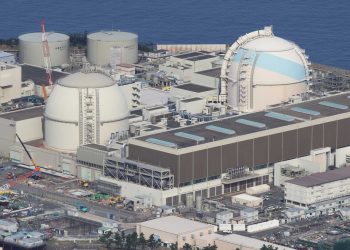,
India and China have pledged after a landmark summit to work faster to end a bitter border dispute, the cause of a brief war in 1962, and double trade between the Asian giants to 40 billion dollars by 2010.
Chinese President Hu Jintao and Indian Prime Minister Manmohan Singh, holding the first leadership meeting in a decade, said settling their frontiers was a key priority as economic links deepen between the world's most populous countries.
“An early boundary settlement will advance the interests of our two countries,” Singh said Tuesday, adding that special representatives from both nations had been told to “accelerate their progress” towards a deal.
India and China, whose people account for almost one third of humanity, have been unable to resolve their border issues despite several rounds of talks.
New Delhi says Beijing occupies 38,000 square kilometres (14,670 square miles) of Indian territory in Kashmir, while Beijing claims 90,000 square kilometres in Indian-administered Arunachal Pradesh.
A formal ceasefire line is yet to be established, but the unsettled Himalayan frontier has remained largely peaceful, thanks to agreements signed in 1993 and 1996.
The two leaders, who met at New Delhi's ornate diplomatic venue of Hyderabad House, also inked 13 agreements mainly aimed at increasing tourism and investment and establishing new consulates in the eastern India city of Kolkata and the Chinese port city of Guangzhou.
Hu said that “India and China are friends” and that his visit was meant to dispel mistrust between the countries — caused by the legacy of the war and Beijing's close ties to India's rival Pakistan.
“We are very satisfied with the way the visit has turned out,” said Indian foreign secretary Shivshankar Menon, referring to the meeting between the two leaders.
Menon added that while the two countries hoped to accelerate settlement of the border row “it is not holding up” ties in other areas.
Hu will leave India for Pakistan on Thursday after a stop in the financial capital Mumbai and the Taj Mahal city of Agra.
The visit comes amid booming trade between the two Asian powerhouses — expected to reach 20 billion dollars this year, a jump of 37.5 percent from 2005. This, the leaders said, should double over the next three years.
“We will endeavour to have the bilateral volume of trade reach 40 billion US dollars by 2010 and encourage two-way investment flow,” Singh said.
“As two of the fastest-growing economies in the world, cooperation between India and China transcends the bilateral and has global significance.”
But some Indian papers seized on the protocol of Hu's arrival to stress that the political relationship remained “businesslike.”
The Hindustan Times said Singh had in the past travelled personally to the airport to greet US President George W. Bush, Saudi King Abdullah and Nepalese Prime Minister Girija Prasad Koirala — whereas Foreign Minister Pranab Mukherjee performed the duty for Hu's arrival.
Hu's tour, the paper said, was unlikely to go down as a “path-breaking” visit.
Khaki-clad security forces were out in force across the capital, with a wide cordon set up around the five-star hotel where the Chinese leader is staying to prevent Tibetan activists from disrupting the visit.
Two Tibetan protesters were arrested outside Hyderabad House.
Hundreds of Tibetans were set to continue their protests in New Delhi and in the home of the Tibetan government-in-exile, Dharamsala, to demand Hu address the status of their Himalayan region.
The sticking points show that, despite improved relations, “anxieties and wariness” remain, said Uday Bhaskar from the New Delhi-based Institute of Defence Studies and Analyses.









